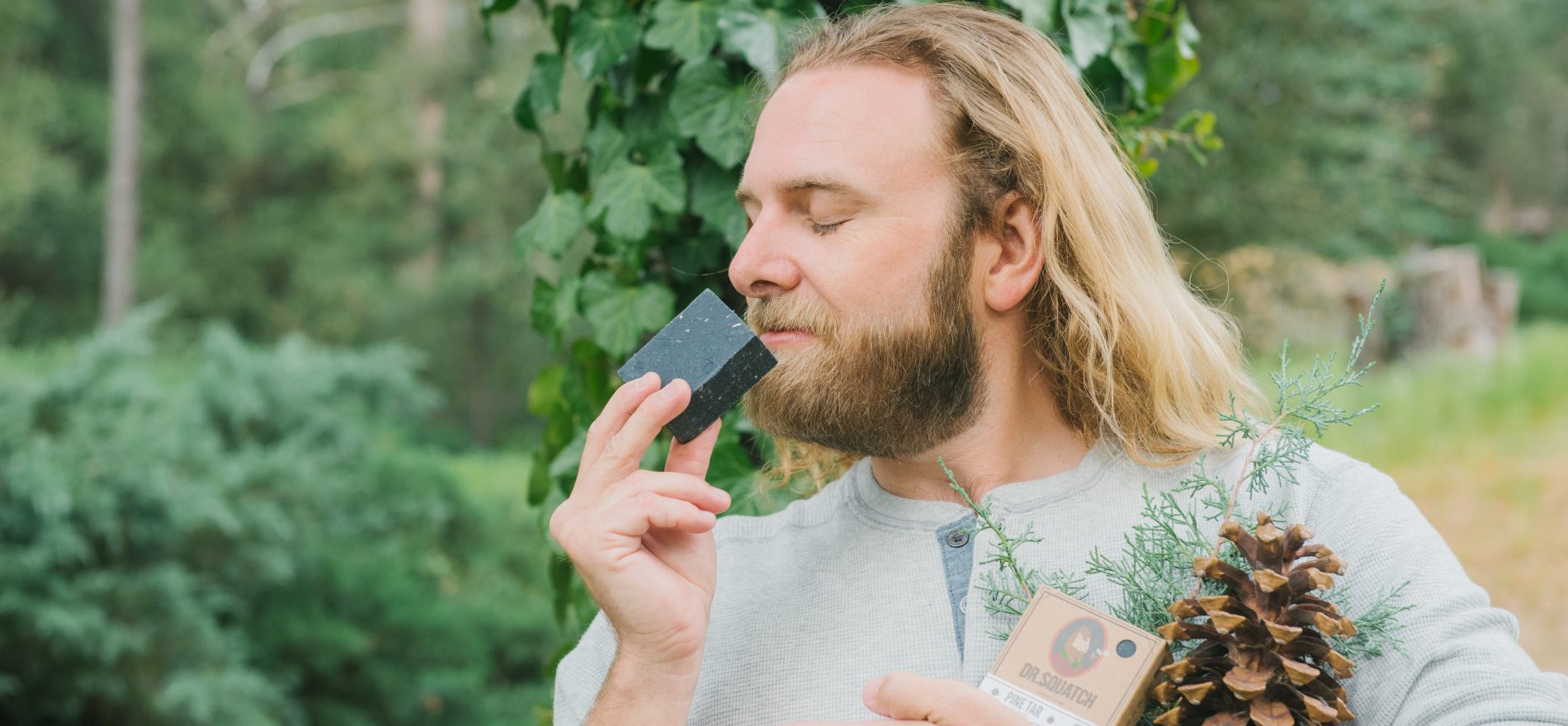
Uses & Benefits of Glycerin
Glycerin: a hero ingredient in personal care products. But what is glycerin, anyways? Where did it come from, and what is glycerin used for?
Today, glycerin is known as a skin hero ingredient in the personal care industry. You probably recognize this food-grade ingredient from ingredient labels of some of your personal care products – especially if you use Dr. Squatch. But what is glycerin, anyways? Where did it come from, and what is glycerin used for? Read on to learn the answers to these questions and more, and learn more about this superpower ingredient.
What are the Benefits of Glycerin?
Glycerin is a humectant (humectants attract water molecules from the air and draw them to the surface), meaning that it’s a great natural hydrator. It’s actually found naturally in human skin, which makes it recognizable to the surface of our skin and can help to maintain the skin’s natural moisture level.
This multifunctional ingredient is virtually odorless, non toxic, and non-irritating, which makes it an ideal ingredient for sensitive skin. Glycerin doesn’t clog the pores, and works as a skin replenishing and restoring ingredient that can help balance the oils of the skin and defend against dryness.
Since glycerin was discovered, over 1,500 uses and benefits of glycerin have been reported (fun fact: it was also used in the invention of dynamite in the late 1800’s).
Where Does Glycerin Come From & How is it Made?
Vegetable glycerin (also called glycerol), is a clear, sweet, and syrupy liquid that is derived from triglyceride-rich* vegetable fats, like coconut, palm, olive, and soybeans.
A Swedish chemist, K.W Scheele, accidentally discovered glycerin in 1779 while experimenting with heating a mixture of olive oil and lead monoxide. The reaction from the heat caused the glycerol molecules to split away from the fatty acids and mix with the water, forming a sweet, syrupy liquid. This was originally named “sweet principle of fat,” which thankfully, we now call vegetable glycerin.
Today, glycerin can be made in a few different ways:
- Heating a mixture of vegetable oil under extreme pressure
- Through the saponification process, where the vegetable fats are mixed with a strong alkali base, like lye (yes, the same lye used in our cold process soap!)
Making products with glycerin the old fashioned way takes time and resources. So in order to cut down on costs, a large part of the mass market manufactures it synthetically instead.
*Triglycerides are esters formed from glycerol that make up the three fatty acid groups, which are the main components of most vegetable or animal fats and oils.
What Products Have Glycerin?
Personal care products with glycerin in them can offer many benefits, which is why many of our products feature this ingredient.
 Natural Glycerin Soap
Natural Glycerin Soap
Bar Soap
Why use soap with glycerin? Showering with a cold process glycerin bar soap will keep your skin hydrated and balanced.
The base of cold process soap is made through a chemical reaction called saponification, which combines natural vegetable oils and lye (sodium hydroxide) with our other base oils to create a hardened bar of soap.
The reaction of changing from liquid to solid soap creates vegetable glycerin, which gets naturally distributed through our bar soap at around 5-7%.
Liquid Castile Soap
The saponification process is also used to make our liquid soap, but instead of using sodium hydroxide (or lye) which hardens the soap into a solid bar form, we use potassium hydroxide. This is an alternate form of lye, which creates a softer Castile liquid soap instead of a solid bar soap.

Oftentimes you won’t see glycerin on these labels, but when soap is made the old fashioned way, it’s a natural byproduct of this process.
Our liquid soap doesn’t dry out your skin, like some synthetically manufactured products from big-brand soap companies that have taken shortcuts in this process.
Glycerin Shampoo & Conditioner
Shampoo and conditioner products that contain glycerin protect those luscious locks in a few different way. As we learned earlier, vegetable glycerin is a natural humectant so helps to draw in water from the air and into the hair follicles. It keeps your hair hydrated, soft and is essential to preventing dry hair and breakage.
Glycerin in Toothpaste
A less common use for glycerin is in toothpaste. Glycerin has a few different functions in our natural toothpaste. It adds a subtle, sweet flavor to make brushing a yummier experience, gives the formula a silky texture and prevents it from drying out or hardening if you leave it open (like when you forget to put the cap back on for a few days).
Hand Sanitizer with Glycerin
You may have noticed that your hands get extra dry after you’ve been using hand sanitizer. The high alcohol content and active ingredients in sanitizers that fight germs also tend to dry out our skin.
In our natural hand sanitizer, glycerin plays an important role and helps to moisturize your hands to combat the drying effects of alcohol.
Related Posts
WTF are Plant Butters?
Wed, Jan 22, 2025• Grooming & Personal Care Natural Living & Health
You might be wondering, “WTF are “plant butters”? Is that like vegan “I can’t believe it’s not butter?”. No, but we’re glad you asked. These rich, ...
Read More5 Protips For A Better Shave
Fri, Jan 03, 2025• Grooming & Personal Care
Let’s be real, shaving is a combat sport. I mean you’re dragging a sharp blade across your face on the reg. Nicks, irritation, tight, dry skin afte...
Read MorePucker Up: Lip Care For Men 101
Fri, Dec 20, 2024• Grooming & Personal Care
Let’s face it (see what we did there?)—lip care is for everyone. Whether you're battling the elements, exploring the great outdoors, or just living...
Read MoreHow To Choose the Right Cool Weather Scent
Mon, Dec 16, 2024• Grooming & Personal Care
No matter where you’re at, we deep into the cool and cold weather (well, not you Hawaii) and that means it’s time to evaluate your scent seasonalit...
Read More


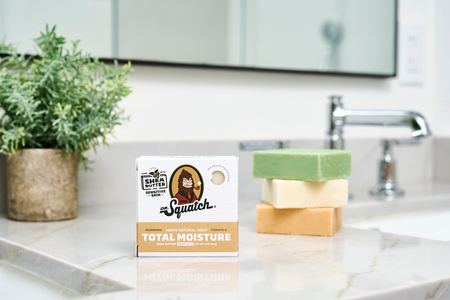
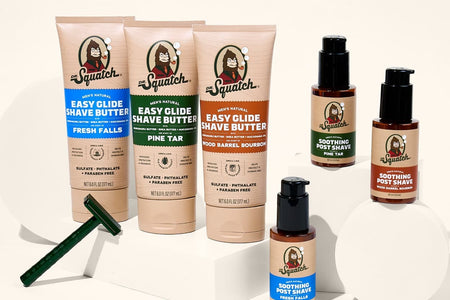
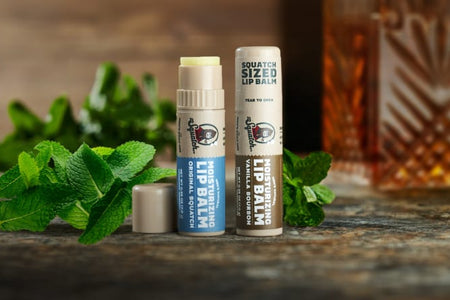

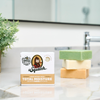
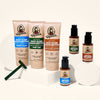
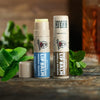


Leave a Reply
Your email address will not be published. Required fields are marked *